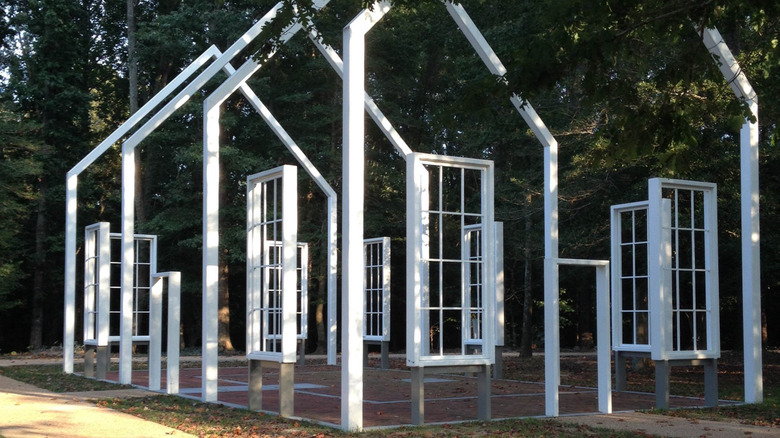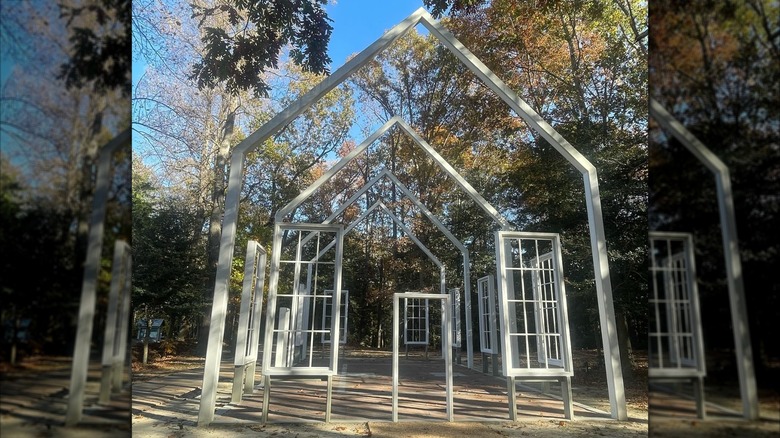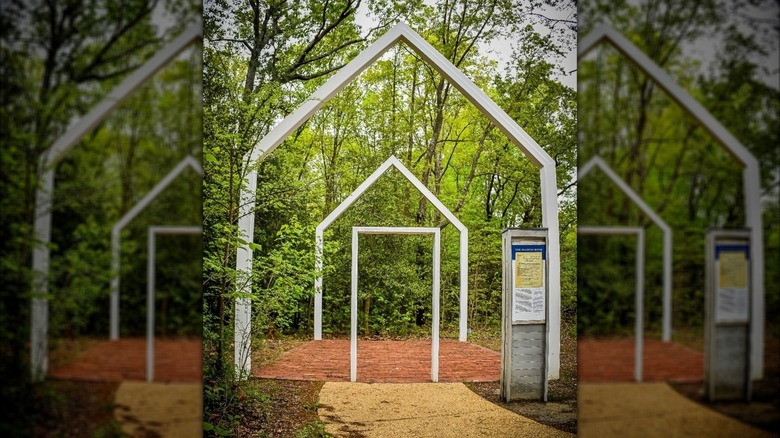Some of Virginia’s truly offbeat, lesser-known destinations lie at the edge of its cities, suspended right between civilization and coastal plains (in the east) or the Blue Ridge Mountains (in the west). You’ll find one of Virginia’s best-kept secrets, the little slice of Italy known as Swannanoa, hidden among the mountains outside of Charlottesville, for example. Then, off the coast, there’s one of the East Coast’s most unusual sights, the Kiptopeke Fleet, a series of abandoned ships transformed into wildlife havens. In between the western mountains and eastern coast, there’s a small suburb of Richmond called Mechanicsville that holds a surprising amount of history. Aside from being the site of a significant Civil War battle, it’s also home to the Historic Polegreen Church.
While the Polegreen Church appears to be not much more than the skeleton of a church, it signifies a turning point in American freedom history. The original church was built in the 1700s to host a growing movement of Presbyterian dissenters. It was destroyed by gunfire during the Civil War, but the Historic Polegreen Church Foundation commissioned a memorial created from beams in the shape of what the original structure might have looked like, based on sketches. Today, you can walk among the beams for free, take pictures, and explore historical markers on pretty walking paths all around the site.
The Polegreen Church forms the ghostly outline of religious freedom
During the period before the American Revolution, the Virginia Colony’s only established and legally recognized religion was the Anglican Church. When dissenters who practiced other religious sects began to emerge in the colonies, they had to keep a low-profile and carry out sermons in homes. Eventually, by the 1740s, some of these homes became licensed as “reading homes” for Presbyterians, and one of them was what later became known as the Polegreen Church. When you’re close up to the beams that make up the present Polegreen Church structure, you might not even be able to tell that it forms the outline of a church. But stand back a bit, and you’ll see its shape come together, in the same way that the history it represents materialized discreetly, in snippets.
As the first non-Anglican to legally preach in Virginia, Reverend Samuel Davies was the pastor of the Polegreen Church. Among the church’s congregation (and one of Davies’ admirers) was Patrick Henry, one of America’s Founding Fathers. The church remained standing until 1864, when artillery from Civil War soldiers burned it down. The structure of white beams outlining where the church once stood was designed by architect Carlton Abbott over 100 years later, serving as a simultaneously eerie and poignant reminder of Virginia’s colonial past.




